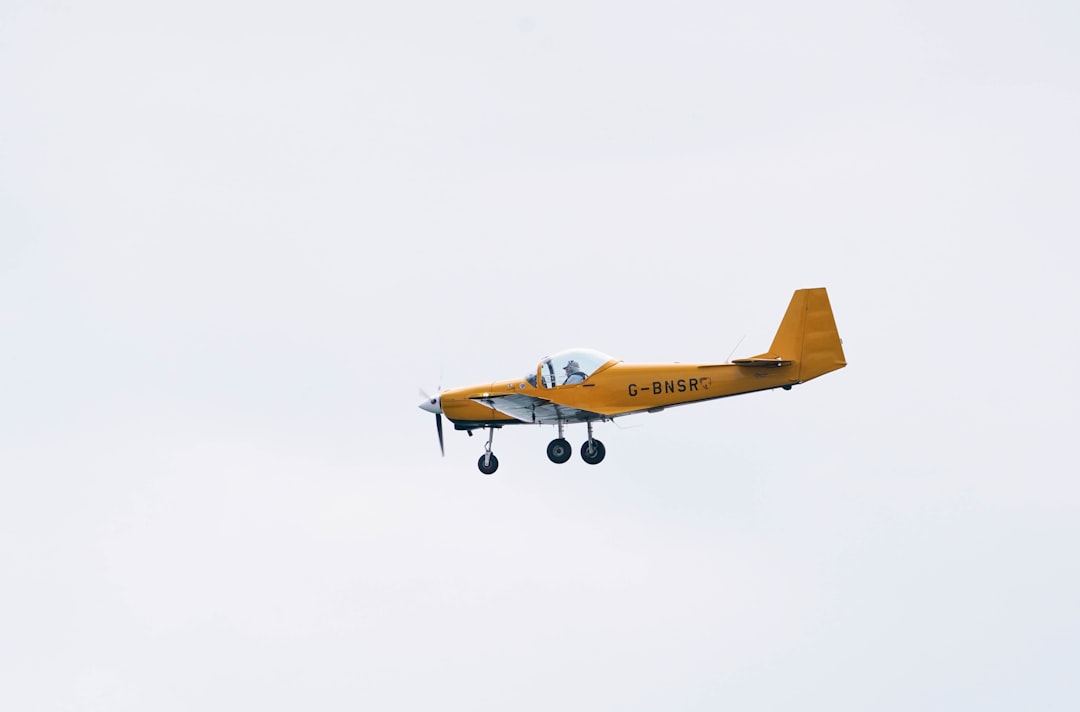When Milton Meets Your FBO: A Hurricane Survival Guide That Actually Works
Published on July 14, 2025 • 5 min read

After Hurricane Milton struck Tampa in October 2024, Signature FBO sustained significant facility damage. Glass shards covered the hangar floor, debris was scattered throughout, yet not a single aircraft was damaged.
The reason: They had a comprehensive plan and executed it effectively.
With NOAA predicting another above-normal hurricane season for 2025 (17-25 named storms, 8-13 hurricanes), FBOs require comprehensive preparation. Here's what the data reveals and the actions you need to take.

The Financial Reality
According to NOAA Climate data, Hurricanes Helene and Milton caused more than $100 billion in combined damage across the Southeast in just two weeks. Helene alone claimed 232 lives and caused $55 billion in damages.
Florida airports that prepared properly recovered within hours. Those that didn't suffered extensive damage: Tampa Executive had to condemn an entire hangar. Plant City Airport sustained major structural damage. Peter O. Knight Airport got hit twice—first with 3-4 feet of flooding from Helene, then wind damage from Milton that tore apart hangar doors.
The Preparation Payoff: Industry data shows that the 2018 hurricane season caused over $50.2 billion in damages, with unprepared facilities facing average repair costs of $25,000-$100,000 per hangar, while properly prepared facilities averaged under $5,000 in damage.
The Staffing Reality: Hurricane evacuations require 2-3x normal staffing levels. Plan for 12-hour shifts, backup fuel truck drivers, and coordination with tower controllers who may be operating with skeleton crews.
Your Pre-Hurricane Battle Plan
E3 Aviation Association's data from Hurricane Ian shows 80% of aircraft at one airport suffered damage—mostly those tied down or left exposed. The 20% that escaped? They relocated inland. Smart 3D aircraft stacking helps you maximize hangar capacity for emergency evacuations.
Here's your priority checklist:
48-72 Hours Before Landfall
- Execute aircraft relocation plan (if wind speeds expected >60mph)
- Top off fuel tanks on all remaining aircraft (weight helps stability)
- Photograph all aircraft positions and tie-down configurations
- Clear ramp of all loose equipment, signs, and debris
- Charge all emergency communication devices
24 Hours Before Landfall
- Install gust locks on all control surfaces
- Use nylon/Dacron ropes at 45-degree angles (never manila)
- Deploy minimum 500-lb anchor blocks per tie-down point
- Seal all doors, windows, and engine covers
- Back up all critical business data off-site

The Digital Documentation Edge
Modern FBOs have learned that meticulous documentation during hurricane prep pays dividends during insurance claims. Digital systems that track aircraft locations, photograph pre-storm conditions, and maintain real-time inventory help accelerate recovery.
According to insurance industry data, hurricane relocation coverage typically reimburses 50% of costs up to $500, including fuel, hangar fees, and pilot costs—but only with proper documentation.
Key digital tracking benefits:
- Real-time inventory of aircraft locations during evacuation (critical for coordinating departures)
- Timestamped photo documentation for insurance claims (can reduce claim processing time by 30-50%)
- Automated owner notifications during emergency operations (reduces phone calls and confusion)
- Streamlined post-storm damage assessment workflows (essential for FEMA reporting)
Implementation Reality: Basic digital tracking systems cost $2,000-$5,000 annually but can save 20-40 hours of administrative time during each major storm event. Modern hangar optimization systems integrate storm preparation workflows.
One mid-sized Florida FBO (40-aircraft capacity) reported: "During Milton, we evacuated 47 aircraft in 36 hours using a combination of owner pilots and contract crews. Digital tracking helped us coordinate departures, avoid airspace conflicts, and maintain chain of custody documentation for insurance purposes." Understanding which tugs work best for rapid aircraft repositioning is crucial during emergency evacuations.
Post-Storm Recovery Protocol
NBAA recommends these critical first steps:
First 24 Hours After All-Clear
- Document all damage with timestamped photos/video
- Check NOTAMs before allowing any aircraft movements
- Inspect all tie-down points and hangar structures
- Test fuel quality before any dispensing
- Coordinate with insurance adjusters (don't move damaged aircraft)
The Million-Dollar Question: Relocate or Ride It Out?
EAA's analysis is crystal clear: relocation beats every other strategy. But it's not always possible.
The Cost Reality: Hurricane relocation typically costs $1,000-$3,000 per aircraft (fuel, hangar, pilot costs), while repair costs for hurricane damage average $15,000-$50,000 per aircraft. Insurance covers only 50% of relocation costs up to $500, making preparation a clear financial win.
Your decision tree:
Relocate if:
- Hurricane watch issued for your area (winds >74mph expected)
- You have 48+ hours before landfall
- Insurance covers relocation costs
- Pilots are available and weather permits safe flight
Hunker down if:
- Less than 36 hours to landfall
- Category 2 or below with quality hangar space
- Relocation airports are saturated
- Weather deteriorating too quickly for safe flight

Your 2025 Hurricane Season Action Items
Stop reading. Start doing. Here's your homework before June 1:
- Audit your tie-down equipment. Replace anything questionable. Quality tie-downs cost $800-$1,500 per set (including chains, anchors, and hardware) but prevent $15,000+ in average damage.
- Create written relocation agreements with 2-3 inland airports. Include fuel, hangar, and pilot arrangements.
- Run a full-scale hurricane drill with your team. Studies show that prepared FBOs bounce back 3x faster than unprepared ones.
- Verify insurance covers relocation and business interruption. Know your coverage limits and claim procedures.
- Implement digital tracking systems for real-time visibility during emergencies. Calculate your ROI on infrastructure improvements that enhance storm readiness.
The 2024 season proved one thing: FBOs with plans survived. FBOs with hope got crushed.
Which one will you be?
Sources:
- NOAA Climate.gov - 2024: An active year of U.S. billion-dollar weather and climate disasters
- NBAA - Hurricane Resources
- E3 Aviation Association - Prepare Your Aircraft for Hurricane Season Now
- Tampa Bay Times - Tampa International Airport will reopen Friday after Milton
- EAA - Hurricanes Are Really Bad for Aircraft
- NOAA - NOAA predicts above-normal 2024 Atlantic hurricane season
- AssuredPartners - Hurricane Coverage and Liability
- AOPA - St. Croix FBO Recovery Model


